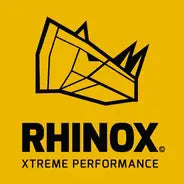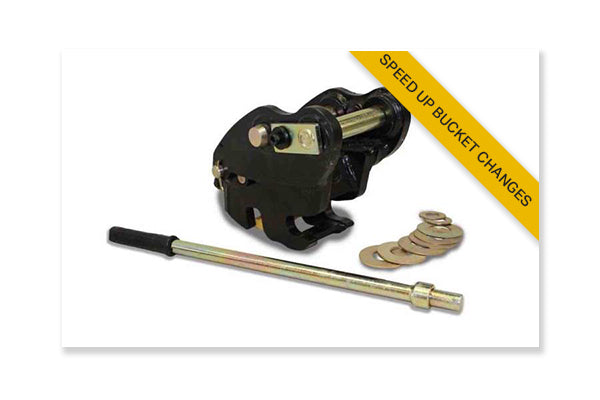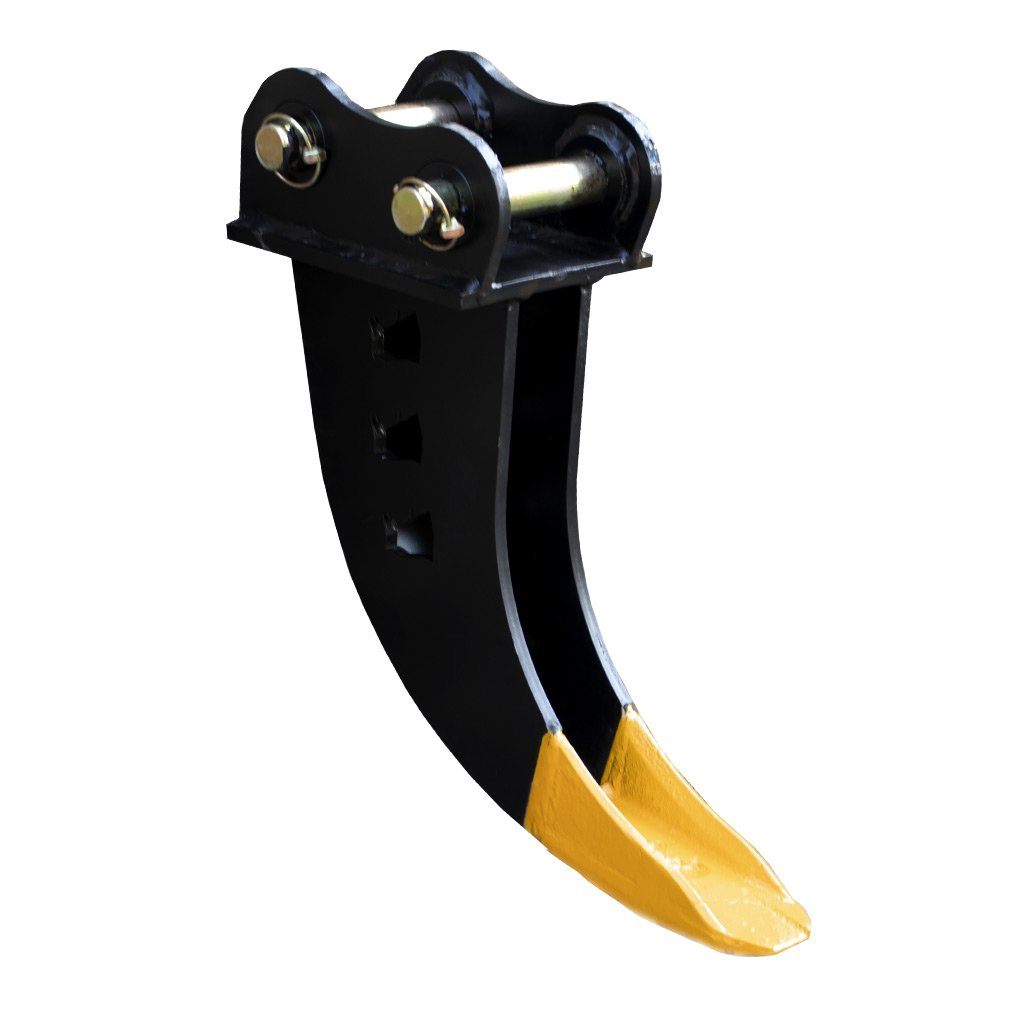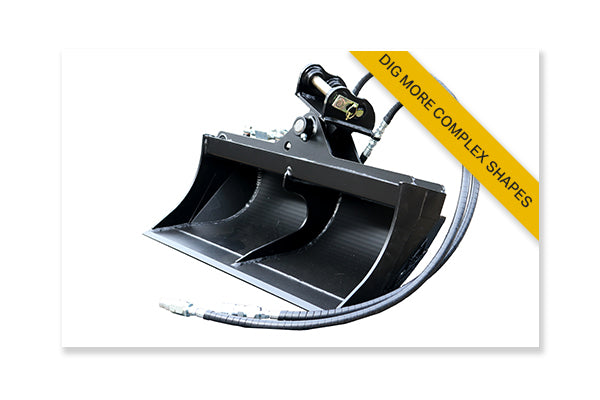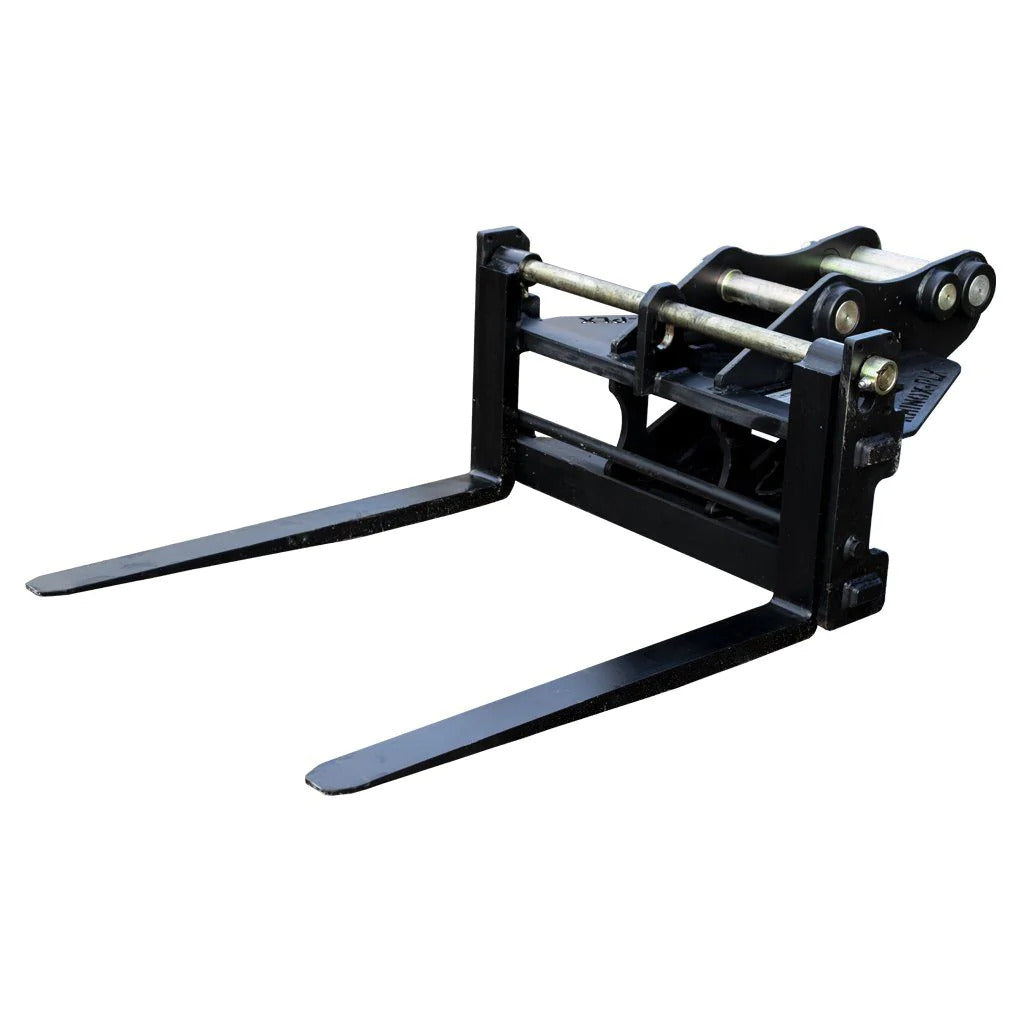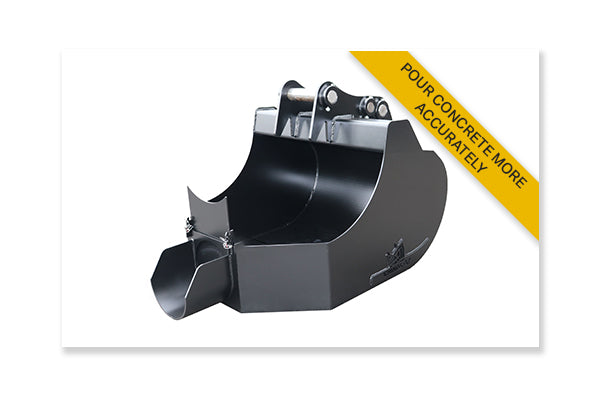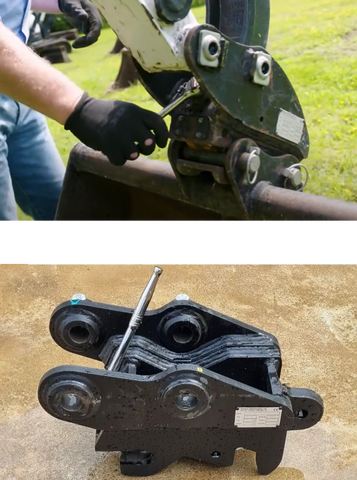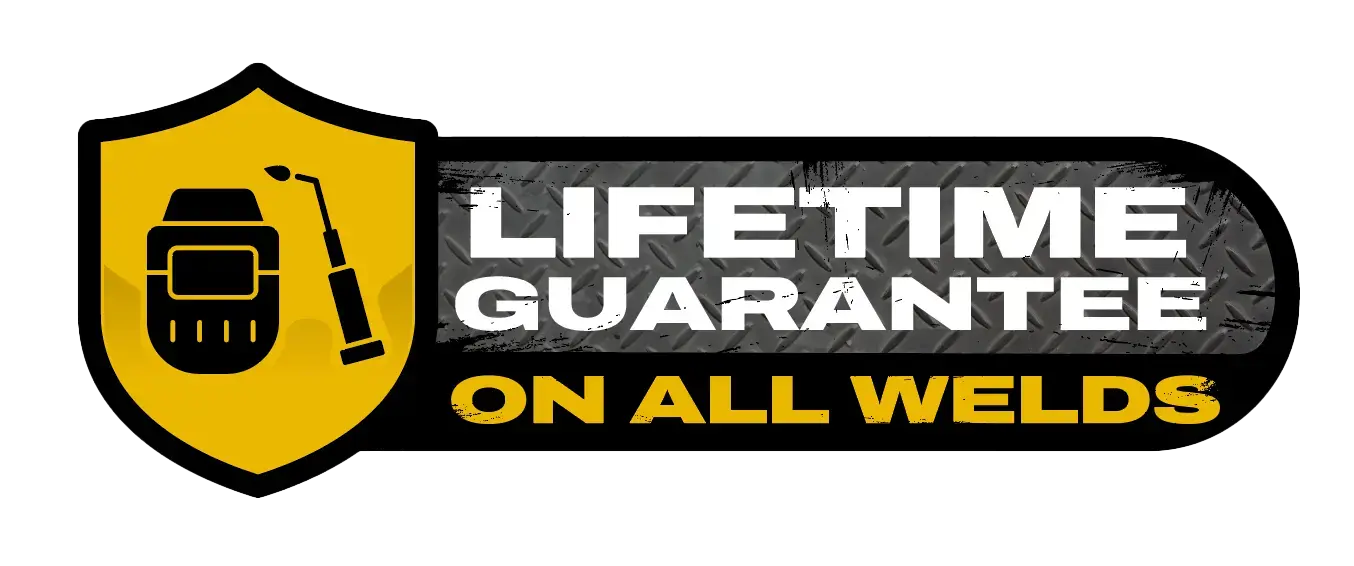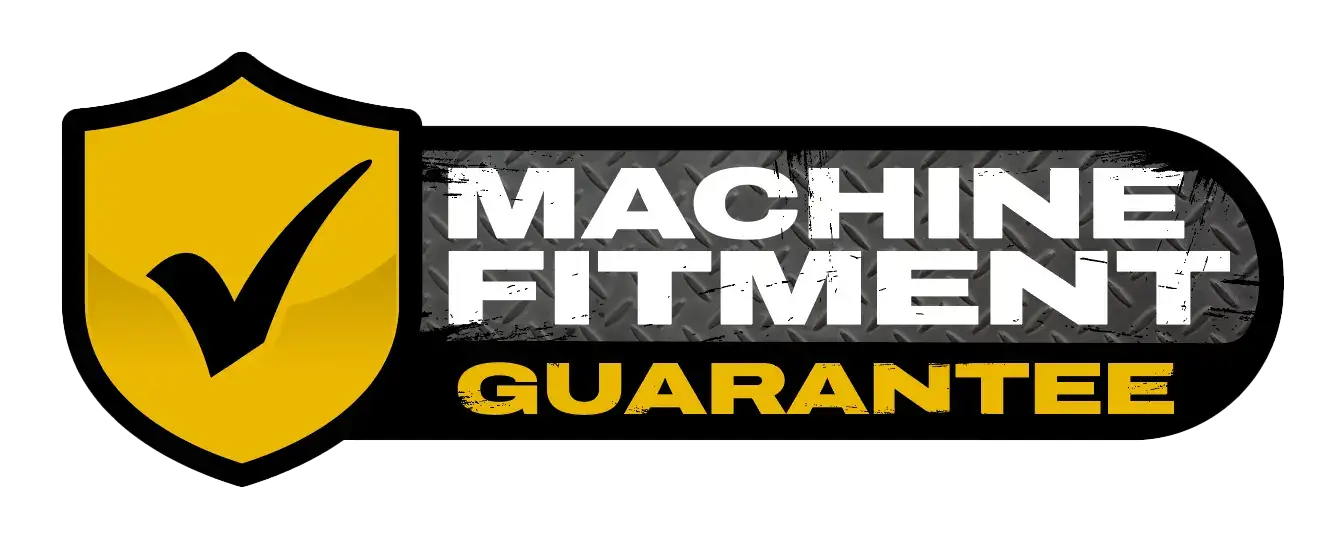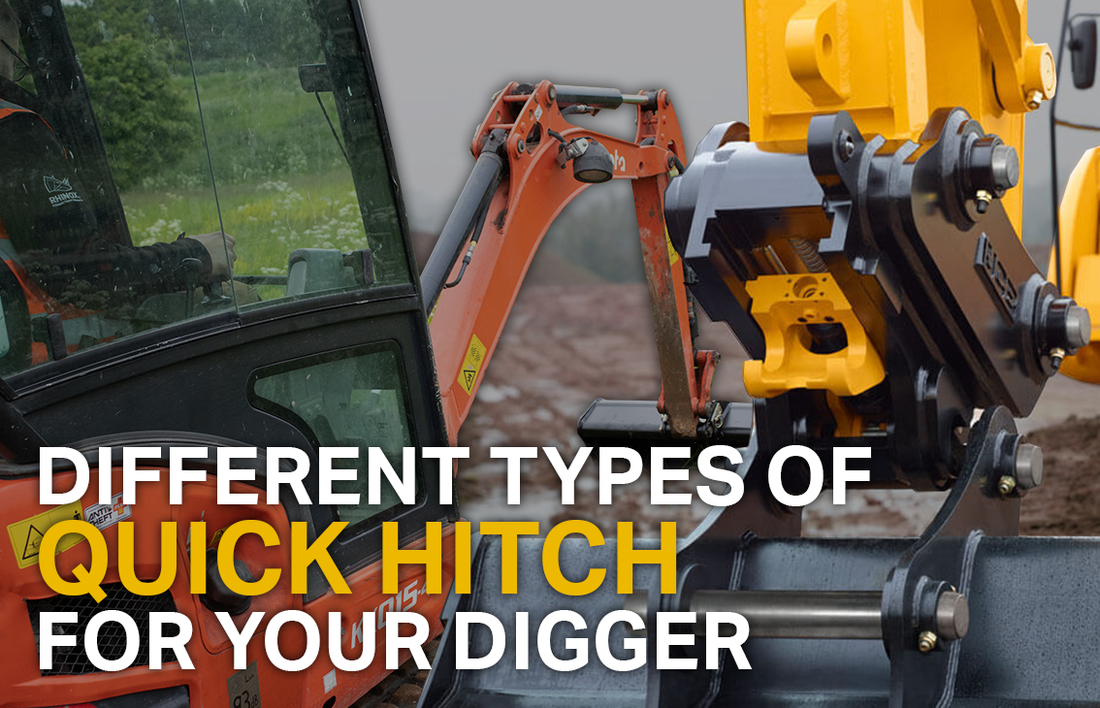
Different Types of Quick Hitch for your Digger
If you're the owner of a digger, you likely know that having the right attachments can make all the difference in efficiency and productivity. Quick hitches are a game-changer as they enable you to swiftly swap between attachments, from buckets to grapples, without the need for time-consuming direct mounting. However, the world of quick hitches is not one-size-fits-all, and choosing the right one for your digger can be a daunting task - especially with the huge variety in type and price. In this blog, we'll delve into the different types of quick hitches available on the market, helping you make an informed decision about which style is best suited to your excavator and budget.
Manually Operated Quick Hitches - What are they?
There are many different types of quick hitch on the market, but they all have the same objective...to make your digger bucket and attachment changes much quicker and easier. Using a quick hitch removes the need to use manual labour to drive the pins in and out of the dipper end and attachment with a hammer or mallet. Manual quick hitches are hitches that require the operator to get in and out of the cab to lock and unlock the hitch when swapping between attachments. The manual hitch usually requires a safety pin to be manually inserted or removed by the operator between each use.
Spring Quick Hitches
Spring type quick hitches are hitches powered by an internal spring. The spring mechanism sits inside the main body of the hitch and assists the locking and unlocking of the coupler onto your buckets and attachments. There are two main spring type quick hitches:
Manual Quick Hitches
The manual quick hitch, also known as the quick attach, mechanical hitch or pin grab coupler, is a fully manual system that requires the operator to open and close a latch to lock and unlock the coupler. This latch has to be operated from outside of the cab by inserting a lever bar into the latch. Applying pressure in a downwards motion onto the lever bar compresses the internal spring and releases the attachment pin. Once the pressure has been released from the bar, the latch will return to its original position, clamping around the pin, if an attachment has been connected. To secure the latch in place, the operator must also insert a safety pin through the hitch to stop the attachment from disconnecting during use.

Due to the manual pressure required to operate the latch, manual quick hitches are usually only available for up to 4 ton excavators but is a great option for anybody looking to purchase a coupler on the lower end of the price scale. These hitches are widely available, with most coupler manufacturers offering some kind of variation. Manual quick hitch prices usually average around £600 for a 3 ton digger. The main downside of the mechanical quick attach is that the operator has to get out of the cab twice to connect or disconnect buckets and attachments. If you're frequently switching between attachments this could become a laborious task, but changing attachments with the manual hitch will still be a considerably faster process than directly mounting your attachments so is a great option for those on a tighter budget.

Autolock Quick Hitches
The autolock quick hitch is a semi-automatic version of the manual quick hitch. It uses a pressure sensitive finger to automatically lock the coupler in place when triggered. Similarly to the manual hitch, the autolock requires a lever bar to be inserted into a latch at the rear of the coupler. For the autolock coupler, this pressure onto the latch locks it into an open position. On the inside of the latch is a pressure sensitive finger, when pressure is applied to the finger, it will trigger the latch to snap shut, locking the attachment pin in place. This self locking latch eliminates the need to manually insert or remove the safety pin to secure your attachments in place, ultimately reducing the number of times you need to get out the digger to just once.

Autolock quick hitches are fairly new to the market, with only a selected few manufacturers producing them within the industry, Rhinox being one of them. Although the autolocking features of this hitch far exceed the features of the manual quick hitch, the autolock hitch averages at a similar cost to your standard mechanical coupler of around £600 for a 3 ton digger. Similarly to the manual quick hitch, the initial manual force required to unlock the autolock hitch means they are usually only available on smaller excavators, up to 7 ton. So if you have a mini digger and are looking to purchase a quick hitch at the lower end of the price range, the autolock is a great option.
Ratchet Quick Hitches
The ratchet quick hitch is a unique style of coupler not frequently seen on the market. With its double locking technology and absence of a safety pin, the ratchet style hitch is a mechanical coupler with a big difference. As the name suggests, the ratchet quick hitch requires a ratchet to lock and unlock the coupler, which means it has no spring. On the front of the coupler is the ratchet operation location which enables you to crank the fully integrated front and back lock into place. As you crank the ratchet to the right the locks begin to close, clamping your attachment pins in place. Cranking to the left opens the locks, releasing the attachment pins.
If safety is your biggest concern, the ratchet quick hitch might be the best option for you as the need for physical labour is minimal and the integrated locks help to avoid injury. The main downfall of this hitch is the potential damage that can occur to the centre bolt of the ratchet operation point. If not operated or cared for properly the ratchet bolt hole can wear down and round-off over time, making it more difficult to get a good connection with your ratchet to lock and unlock the hitch. The main manufacturer for ratchet quick hitches on the market is Harford with their Pro-lok Quick Hitch, which varies in size from 0.75 to 9 ton excavators.

Toolless Quick Hitches
The toolless quick hitch is a dedicated hanger coupler, designed to be used without external equipment, such as ratchets or lever bars. Although it requires no additional equipment, the toolless hitch still requires manual operation by the operator. To disconnect the attachment, the operator must first pull the captive safety pin and open an integrated side handle to release the hitch from the bucket hanger.
The toolless quick hitch is a great option for anybody who is likely to misplace tools, as all the equipment required to operate the hitch are integrated within the body. The main downfall of this style of hitch is that they require buckets and attachments with a dedicated hanger set up. This unique hanger style can make it considerably more difficult to find a manufacturer that produces buckets and attachments for your quick hitch. This can be a nuisance if you have a preferred bucket supplier as they may not manufacture to the toolless hitch hanger specifications. A good example of a toolless quick hitch is the Harford Safelock which requires dedicated attachments for use. As the toolless quick hitch is another manual coupler the size range of these are limited to the smaller excavators, usually varying in size from 0.75 to 9 ton diggers.

Half Hitches
The half hitch is a simple single pin design, manufactured without moving parts. To connect to an attachment, the operator must use the front hook of the hitch to pick up the front attachment pin, crowding the attachment to line up the rear hitch and attachment pin holes. A bucket pin must then be manually inserted through the aligned pin holes to secure the coupler in place.
As half hitches have no moving parts, they are inexpensive to manufacture so are usually available on the market for around £200. This is a great option if you're on a tight budget or wanting to test out if a hitch is going to benefit you. Although the initial price may look enticing, the operation of a half hitch is something you need to consider. The manual labour that is required to drive the back pin through the hitch and bucket will cause wear to both components over time. The half hitch is also becoming less popular in the industry due to the ever-changing developments of hitches, making it difficult to locate a manufacturer that still makes them. Currently, the most popular half hitch in the UK is from Whites Material Handling, who can tailor the hitch to your machine specifications if required.
Hydraulic Quick Hitches - What are they?
Hydraulic quick hitches are hitches that require minimal labour from the operator, allowing you to switch between buckets and attachments from inside the cab. The hydraulic hitch requires the operator to flick a switch, usually located on the dashboard of the cab, to lock and unlock the hitch.
Standard Hydraulic Quick Hitches
The standard hydraulic quick hitch is one of the most popular styles of hitch on the market. If you have experience with quick hitches, you know the benefit they bring to productivity and downtime - the hydraulic hitch is an essential investment. The hydraulic quick coupler usually connects to your excavators hydraulic lines allowing you to power the internal hitch spring from inside the cab via the switch. The spring is powered by numerous captive hydraulic components which control the movement of the locking latches. Once the operation switch inside the cab has been activated, the latch will close to lock the attachment pin in place. The same action is carried out to unlock the coupler to disconnect the attachments.
The biggest benefit of the hydraulic quick hitch is that it allows the operator to connect and disconnect buckets and attachments from inside the cab. Not only does this reduce the amount of time it takes to change your attachments, but it also increases the amount of time you can spend working, to get your projects completed faster. Not only is this beneficial to single machine operators, but it's also a huge benefit to plant operators as their customers are going to have a smoother operating experience which will likely bring them back for any future needs. The other huge benefit is that hydraulic hitches have the ability to pick up a wider variety of pin sizes due to the travelling latch. This means that you will be able to pick up buckets and attachments within a pin range, rather than one specific pin size, making your buckets and attachments more versatile across a range of different machines. This is great if you own a hire company with different excavators as it allows you to mix and match your buckets and attachments.
The main downside to a hydraulic hitch is the knowledge required to install the coupler. They are much more complicated to fit and install than a standard manual quick hitch, as the hydraulic lines have to be piped into your excavator. However, there are many services within the industry that are available to fit and maintain these hitches for you so do not rule out the hydraulic hitch solely on this basis. As you can imagine, hydraulic quick hitches are not cheap and can often be 3 to 4 times more expensive than a standard manual quick hitch. But, they are widely available on the market so pricing can vary dramatically, usually averaging around £1,500 for a 4 to 6 ton excavator. Due to the minimal manual handling, the hydraulic quick hitch is available for even the biggest of excavators, usually ranging from 0.75 up to 45 tons.

Tilting Quick Hitches
The tilting quick hitch is a step up from your standard hydraulic quick hitch. As well as having the ability to change your buckets and attachments from within the cab, the operator is also able to tilt attachments from left to right to help perfect those complex shaping jobs. The operation of this hitch remains the same but with the addition of a central pivot point allowing the operator to tilt up to 90 degrees in both directions.
The tilting hitch is most beneficial to landscapers who frequently complete complex projects. Such as creating the camber on a road, profiling the edge of drainage trenches, carving out garden landscapes and golf courses and even grading the slopes of ponds and lakes. As well as providing the operator with the ability to tilt the bucket 90 degrees to excavate or grade against a pre-built wall.

The main downfall of the tilting coupler is the reduction in breakout force. Breakout force is the amount of power that is put through the attachment into the ground. Due to the increased height of the hitch, the amount of force that is put through to the bucket or attachment is significantly less, meaning the excavator has to work harder to complete the job, compared to using a standard hydraulic coupler.
Although not as popular as the standard hydraulic coupler, the tilting hydraulic quick hitch can be widely found within the market, with some of the most popular manufacturers being Geith, Miller's PowerLatch Tilt and Hill Attachments TEFRA coupler. Tilting hitches are usually available for 1.5 to 26 ton excavators, with prices averaging around £4,000. So if you're a landscaper that knows the tilting function will be a huge benefit then the cost could be justified but if you're questioning how essential this function is the standard hydraulic quick hitch might be the preferred option for you.

Rotating Tilting Quick Hitches
The rotating tilting quick hitch, or tiltrotator as they're more commonly known, is one of the most desired couplers on the market, with most operators itching to get their hands on one. The rotating tilting style of quick hitch is the step up from the hydraulic tilting quick hitch mentioned above. It does what the name suggests...tilts and rotates. This hydraulic tiltrotator allows the operator to connect and disconnect attachments from the comfort of the cab, while also spinning 360 degrees and tilting 45 degrees to allow you to get the perfect angle for any job.

Rotating tilting quick hitches are the solution to improving productivity and efficiency, allowing you to manoeuvre any attachment to the desired height and angle for your job. The most popular versions being Rototilt, Engcon and Steelwrist hitches, which you will likely see on large construction or groundworks sites paired with the Scandinavian style of buckets and attachments for S30, S40, S60 and S70. The tiltrotator quick hitches works perfectly with attachments like excavator pallet forks to make your digger the all-in-one construction machine. The main drawback of the rotating tilting quick hitch is the cost. Due to the engineering and design complexity, these hitches can cost an eye-watering amount, usually starting at around £22,000 for a 10 ton excavator. Tiltrotators are available for a wide range of machines, usually ranging from 1 to 33 tons.
Should I fit a Quick Hitch to my Digger?
When purchasing a quick hitch for your digger the price will directly reflect the quality of the hitch that you're looking at. If you're looking for a product that is going to dramatically improve your productivity and save you hours of time changing attachments, then the price will reflect this and will likely be on the more expensive end of the scale. So if you have an excavator on the smaller end of the size scale and are wanting to use a quick hitch to improve your efficiency, then starting with a manual quick hitch is our best recommendation. However, if you have an excavator on the larger end of the size scale a hydraulic coupler is a must have! The complexity of your projects will help you determine the necessity for tilting and rotating functions.
If you have any questions about quick hitches and what option is best suited to you and your projects, do not hesitate to get in touch via 01430 259259 or leave us a comment down below and we'll be happy to have a chat.
For more information about quick hitches, check out some more of our content below:
 |
 |
 |
